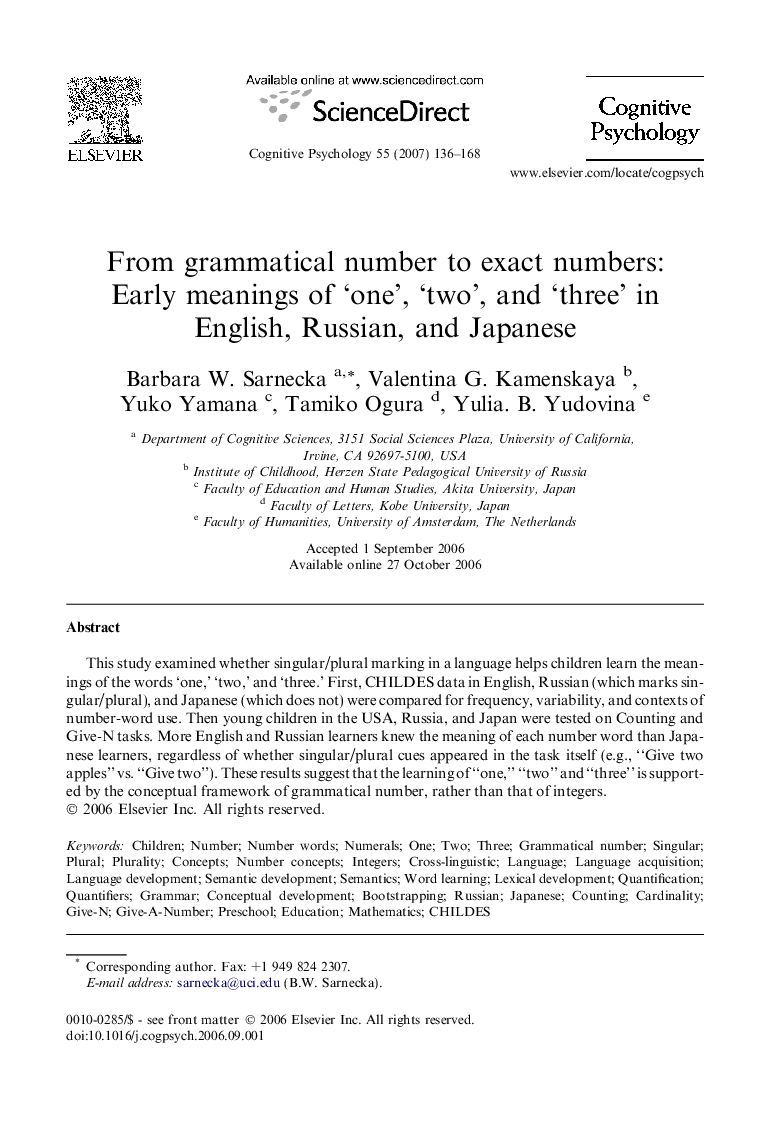| کد مقاله | کد نشریه | سال انتشار | مقاله انگلیسی | نسخه تمام متن |
|---|---|---|---|---|
| 917097 | 919047 | 2007 | 33 صفحه PDF | دانلود رایگان |

This study examined whether singular/plural marking in a language helps children learn the meanings of the words ‘one,’ ‘two,’ and ‘three.’ First, CHILDES data in English, Russian (which marks singular/plural), and Japanese (which does not) were compared for frequency, variability, and contexts of number-word use. Then young children in the USA, Russia, and Japan were tested on Counting and Give-N tasks. More English and Russian learners knew the meaning of each number word than Japanese learners, regardless of whether singular/plural cues appeared in the task itself (e.g., “Give two apples” vs. “Give two”). These results suggest that the learning of “one,” “two” and “three” is supported by the conceptual framework of grammatical number, rather than that of integers.
Journal: Cognitive Psychology - Volume 55, Issue 2, September 2007, Pages 136–168